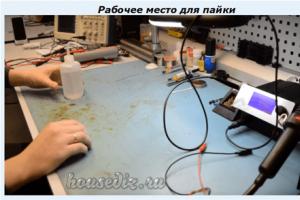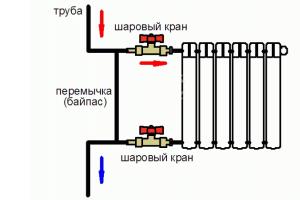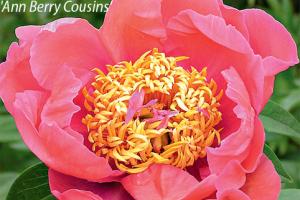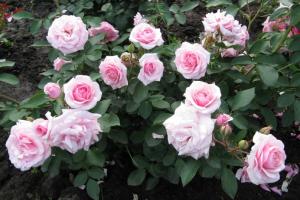Reo is a wonderful indoor plant. Belongs to the Commelinaceae family. Sometimes this representative of the flora is called Roeo or Reo. Latin name: Rhoeo.
Professional flower growers classify the plant as a separate genus Reo. But some sources indicate that the pet is included in the genus Tradescantia. This is due to the fact that this indoor flower came from Fragrant Callisia, Zebrina and Tradescantia.
Reo flower is a small herbaceous perennial. It has amazing colorful leaves. The top layer has an emerald tint, the bottom layer is burgundy-lilac.
The leaves are very large, tight, urinary. They reach a length of more than 28-32 cm. They are formed around a shortened fleshy trunk.
Most subspecies have lightened longitudinal stripes, which are located on the upper glossy surface. For greater bushiness, professional gardeners recommend pinching the top of the main stem. Side branches should form from such a shoot.
Important! In order to get an amazing lush hat collected from multi-colored leaves, when planting you need to choose large, wide containers. The more space the root system takes up, the more branched and luxuriant the flower itself will be.
Photo



Bloom
Most often, flowering occurs in summer. But with good care, the plant blooms several times a year. When the “caps” fade, new ones form in their place. For beautiful lush flowering, this representative of the flora needs a large amount of light. Inflorescences are formed at the base of the trunk. They are endowed with an unusual shape. They are several convex, intersecting bracts.
These leaves resemble small mollusk shells. They are also sometimes called “miniature boats.” Thanks to such leaves, the plant is popularly called the “Rook of Moses.” Miniature snow-white flowers form between the amazing leaves.
Medicinal properties
 In the wild, the flower has medicinal properties. The juice obtained from the stems and leaves is used in medicine. Thanks to its antioxidant effect, juice helps stop bleeding gums.
In the wild, the flower has medicinal properties. The juice obtained from the stems and leaves is used in medicine. Thanks to its antioxidant effect, juice helps stop bleeding gums.
Therefore, in folk medicine, juice is often added to rinses. A decoction of the leaves of the plant helps with respiratory diseases. Eliminates rhinitis, laryngitis, sinusitis, pharyngitis and sore throat. Cleanses the lungs.
But in indoor conditions the plant loses its healing properties. The sap from the stems and leaves of the plant can cause burns. It irritates the skin, causing hives and very severe redness. Therefore, when transplanting a flower, it is recommended to wear thick gloves.
Spreading
The flower is native to the southern and central states of the United States. In this area, Reo grows in the tropics, on the coast, and in the mountains. Prefers moist soil. Loves wet edges and banks of ponds. Can grow in the shade. But it prefers plenty of sunlight.
In the wild, the Reo plant grows in South Africa, the USA, Australia, Korea, Japan, China, and Europe. At home, it has covered almost the whole world. Sold in almost all flower shops, as it is one of the most common plants.
Important! The plant is unpretentious in growth. Therefore, it is ideal for amateur gardeners.
Kinds
Almost all types of Reo are unpretentious in growth. They are united by amazing colorful leaves, as well as healing properties.
Variegated Reo (discolor) belongs to the Commelinaceae family. It is a beautiful branched plant. Looks like a herbaceous perennial. It reaches a height of 40-60 cm. As it grows it will expand in width. It has powerful elongated leaves that form large rosettes. They have a lilac-emerald hue. The flowers of this subspecies are miniature and snow-white. Since this species is the most common, it has covered almost the entire world. Grows in Asia, Europe, USA, Australia, South Africa.

Blanket Reo (spathacea) is a monotypic species. It is considered a herbaceous perennial. Has a well-developed root system. It grows quickly in breadth.
Sometimes this plant is called a multi-colored flower or tradescantia. The plant is native to the USA. Has a strong standard. It reaches a height of no more than half a meter. It has alternate leaves that form a rosette. With good care, such leaves can completely cover the stem with their bases. But the older the plant gets, the fewer leaves it has.
Many blanket Reo are bare, and have rosettes only at the tips of the stems. The leaves are linear in shape. They reach 25-30 cm in length. They have an emerald color on top. The lower leaf plate has a lilac tint. Inflorescences are formed in the leaves, which are arranged spirally. They are mainly located in the wide sinuses.
The flowers of the plant are three-petaled, miniature, snow-white. They have a pleasant floral aroma. They grow in dense bracts of a lilac hue. The bracts are formed in the shape of a boat. This representative of the flora blooms all year round.

Reo Dwarf (dwarf) has amazingly beautiful multi-colored leaves. The upper side of the leaves has a light emerald tint. Along the edges of the leaves there are even snow-white stripes. The lower surface of the leaves is lilac. The length of the leaf plates reaches 30-32 cm. They grow from formed rosettes.
Due to this unusual color, this flower is sometimes called silver. This representative of the flora reaches no more than 0.5 m in height. But in good conditions it grows very quickly. It takes root well. Therefore, Reo must be planted in wide bowls. The plant blooms almost all year round.
Has a wonderful aroma. But breaking off branches and leaves is not recommended. They contain enzymes that can severely injure the skin. Reo Dwarf loves plenty of sunlight. Grows well in warm rooms. Doesn't like temperature changes. It has a strong, stable trunk. Used as office decoration.

Care
The plant takes root well at home. Ideal for decorating offices. Looks amazing in flower arrangements. Loves plenty of sun. Requires illumination in the range of 2500-2700 lux. It is necessary that light falls on the plant for 9-11 hours a day. Permissible temperature in summer: 20-24°C. In winter, the temperature should not be allowed to drop below 15°C. Reo is a plant that loves humidified air, systematic watering, and fertilizing.
Important! Reo runs wild very easily. Therefore, plants can be transplanted from wide containers into greenhouses and greenhouses. The plant also looks great in hanging pots.
Reo is a beautiful branching plant. It has beautiful multi-colored leaves of an emerald-lilac hue. It has a stable trunk and a branched root system. It takes root well. Grows well in neutral or slightly acidic soil. Includes several different subspecies. Distributed throughout the world.
Reo is a decorative and unpretentious flower that will look great as a single plant or in composition with other potted crops. Its dense leaves of deep purple or variegated colors will enliven any interior. Growing reo will not cause much trouble, so it can be recommended even to novice gardeners. To destroy this hardy plant, you need to try hard, but its attractive appearance depends on proper care.
- Reo striped has light longitudinal stripes on the outer part of the leaf.
- The color of reo pink corresponds to its name - its foliage is decorated with stripes of pink color.
- Reo variegated Compacta is a compact, low-growing bush.
- Reo multi-colored Vittata differs from its “relatives” by the presence of longitudinal stripes of yellow color.
- 1. Place a drainage layer at least 2-3 cm thick at the bottom of the new pot using expanded clay, river pebbles or broken red brick. Sprinkle some fresh soil mixture on top.
- 2. Carefully remove the bush from the old container and move it to the center of the new flowerpot. To prevent the soil from falling off the roots, the plant needs to be watered a few hours before transplanting.
- 3. Fill the voids between the soil ball and the walls of the pot with fresh substrate, lightly compacting it with your hand. The soil should not be pressed down too much, so as not to impair the air and moisture permeability of the soil.
- remove the adult bush from the pot;
- using a sterile knife, divide the mother specimen into 2 or more parts so that each of them has strong, well-developed roots and several shoots;
- Plant each division in an individual pot, following the recommendations outlined above.
Show all
Description
The official name was given to the flower in honor of the nymph Reo, so it is correct to speak of it in the feminine gender. To this day, botanists are debating the systematization of the plant: some classify it as a separate monotypic genus, others classify it as a member of the Tradescantia genus. One of the names of rheo is Tradescantia capillata. It testifies to the close relationship of the flower with unpretentious representatives of the Commelinaceae family: Tradescantia, zebrina and callisia (popularly known as golden mustache).
Reo is native to the tropics and subtropics of the American continent with a warm, humid climate. However, the plant is perfectly adapted to the harsher conditions that can be created for it in an apartment. In the natural environment and indoor culture, reo is grown as a perennial. Its thick, fleshy stems can reach 0.5 m in height. With enough light, the shoots grow straight, forming dense thickets, and when illuminated from the side, they tilt to the sides and create bushes of arbitrary shape.
The sword-shaped, pointed leaves are located close to each other and grow up to 25-30 cm in length. Their color depends on the variety; the leaf plates can be plain or covered with a pattern in the form of longitudinal stripes or streaks of white, yellow, pink or burgundy. With age, the lower leaves die off, part of the stem becomes bare, and the plant takes on the appearance of a false palm.
The flowering of reo is rather inexpressive: its small white flowers are hidden by boat-shaped bracts, thanks to which the plant received the name Boat of Moses. Under favorable conditions, the plant can bloom all year round.
There are few species cultivated at home, but they are all highly decorative:
Thanks to the work of breeders, new spectacular varieties are appearing. Thus, multicolored Stripe in Pink will be a worthy decoration of any interior, because its white and pink stripes on a purple and silver background are not inferior in attractiveness to expensive exotic crops.

Reo multicolored Vittata

Reo multi-colored Compacta

Care
Reo perfectly adapts to any room temperature and lighting, and is undemanding to the composition of the soil and humidity. But in order for a flower to please with a healthy appearance, it is advisable to create conditions for it that are close to natural.

Lighting
For growing the Rook of Moses, lighting plays a leading role - the more sunlight the plant receives, the richer the color of its leaves. The most successful location for the flower is the eastern or western window sill. When placing a bush on a south window, you should make sure that there is a translucent curtain between it and the window, protecting the leaves from the effects of the burning rays of the sun and the formation of burn spots.
By the appearance of the plant it is easy to determine whether it has enough natural light: stretching shoots, pale leaves and a change in purple color to green are a signal to move the flower to a more illuminated place. In the cold season, which is characterized by short daylight hours and the predominance of cloudy weather, the rheo may experience a lack of lighting. In this case, you can help the flower by illuminating it with fluorescent or LED lamps. The total duration of daylight should be at least 10-12 hours, but only if the temperature in the room is above +20 °C.

Air temperature and humidity
Despite its tropical origins, Moses Boat does not tolerate high temperatures. The optimal parameters in spring and summer are +20...+24 °C, in winter +14...+18 °C. When placing a flowerpot with Tradescantia capulata, you should take care of the complete absence of drafts - their effect will negatively affect the condition of the flower.
But there are no special requirements for air humidity: reo normally tolerates dry air in apartments, but to maintain decorativeness it must be periodically sprayed with purified (filtered) water. In spring and summer, you can bathe the plant under a gentle stream of warm water (+30...+35 °C), but this procedure is not recommended during the flowering period.
Watering and fertilizing
Reo should be watered carefully. The flower likes the soil inside the flowerpot to always be slightly moist, but excess moisture can destroy it. When watering, you need to focus on the condition of the top layer of soil in the pot and water only on the third day after it dries.
To prevent spectacular foliage from acquiring a brown tint, it is necessary to use soft, settled water at room temperature or 2-3 degrees warmer. It is advisable to pass it through a household filter or reverse osmosis system - this is the only way to clean the liquid from harmful mineral salts and lime impurities.
You need to water the reo at the root so that drops of water do not fall into the axils of the leaves.
During the active growing season (from March to September), fertilizing should be carried out 2 times a month, using any universal fertilizer for indoor decorative deciduous crops. With the onset of autumn, when the air temperature in the room drops and the length of daylight hours shortens, fertilizing should be stopped. But if the temperature remains the same and the plant has enough light, it is recommended to apply fertilizer once a month, adding it to the water for irrigation.
Trimming
Reo does not need special pruning. As old leaves dry out, spoiling the overall appearance of the bush, they should be carefully torn off, and for better tillering, the tops of the shoots should be pinched. In the warm season, pruning can be used to give the plant the desired shape, and cut cuttings can be used for propagation.
Tradescantia capillata secretes juice, which, upon contact with the skin, can cause irritation in the form of redness or itching. Therefore, during pruning and planting work, it is advisable to protect your hands with waterproof gloves and protect your eyes.
Soil and replanting
Reo is not picky about the composition of the substrate, so for planting or replanting it, universal soil for ornamental foliage plants, which can be purchased at any flower shop, is suitable. If you have leafy soil, turf soil, humus soil, peat and sand on hand, you can mix them in equal proportions and use the resulting soil instead of store-bought soil.
You will have to replant Moses' Rook every year in the spring, purchasing pots of larger diameter. The process is simple, so even an inexperienced gardener can handle it. Transfer from an old pot to a new one should be done by transferring, trying not to destroy the lump of earth surrounding the roots. It is better to replant adult or heavily grown specimens once every 2-3 years and do it together so as not to break the fragile stems.
Reo transplant step by step:
When planting rheo, it is worth considering that its rhizome grows in breadth, located in the upper layers of the soil. Therefore, it is advisable to plant the flower in wide but shallow pots.
Reproduction
The indoor reo flower is propagated quite simply: to obtain young specimens, you can use cuttings, parts of an adult bush or seeds. Each method will not cause any particular difficulties, but has its own advantages and disadvantages.
Cuttings
It is advisable to propagate reo by apical cuttings or root suckers in the warm season. For better rooting and to prevent rotting, leaves should be removed from the lower part of the planting material, which will be immersed in soil or water. You can root the plant in a container with water or in a moistened mixture of peat and sand, consisting of equal parts.
Cuttings placed for rooting should be kept in a warm (+20 ° C or slightly higher), well-lit place. After the roots grow to 1.5-2 cm, they can be planted in a permanent place. If they are in the ground, a sign of successful rooting is the formation of young leaves.
To make the future bush look more attractive, you need to plant several cuttings in one pot at once.

Cuttings with full roots are ready for planting
Dividing the bush
It is better to carry out the propagation procedure simultaneously with the next spring transplant:
This method is very convenient - in a short time you can get several attractive bushes at once. However, this propagation option is available only to those who already have a fairly mature plant in their home collection.
Seed propagation
Sowing reo seeds can be done at any time of the year, provided that the apartment is warm. However, when propagating from seeds, it is not always possible to obtain the desired result: most often, the varietal characteristics inherent in the mother plant are not transmitted. Thus, the seeds of showy varieties with a striped leaf surface sprout with a nondescript, monochromatic color, while varieties with a purple tint become green.
Seeds should be germinated in a moist sandy-peat substrate, covered with glass or a bag and ventilated daily. When seedlings appear, the transparent cover can be removed and the sprouts can be cared for as usual, moistening the soil as needed. Fresh seeds usually germinate well and sprout quickly.
Problems during cultivation
The health of Tradescantia tangulata is evidenced by its appearance: a healthy flower has strong, succulent stems and bright leaves with a rich color. But drying or wilted foliage and drooping shoots should be a cause for concern. Typical mistakes that can lead to illness are outlined in the table.
Description of symptoms | Causes | Treatment |
The lower leaves dry out and fall off | In adult plants this is a natural process, since with age the lower part of the shoots becomes bare | No special measures required |
Reo sheds young leaves | Waterlogging of the soil | Reduce watering. In advanced cases, replace the soil in the pot and water more carefully in the future. |
The tips of the leaves turn brown and dry out | Insufficient watering Dry indoor air | Adjust watering schedule Spray the flower periodically with a fine spray bottle. |
The color of the leaves has become pale and less expressive | Watering with water containing high levels of chlorine and calcium compounds Lack of lighting | Use purified or boiled water for hydration Move to a brighter place, in winter turn on fluorescent or LED lamps next to the flower |
The shoots become very elongated, the internodes lengthen | Lack of lighting | Provide the required level of illumination. Do not place the reo pot on the north window |
Slow shoot growth, shrinking foliage | Lack of nutrients in the soil | Feed the flower in accordance with the fertilization schedule |
Drooping, drooping leaves and stems | Low air temperature | Move the pot to a warmer place, remove the flower from the cold windowsill |
Yellow spots on leaf blades | Burns from direct sunlight | Shade the bush with a translucent curtain or mesh tulle. |
Of the pests, the greatest danger to Moses' boat is scale insects. If you find insects on a flower, you need to treat all the leaves with a soap solution. First remove the adults from them. In case of severe infection, it is easier to remove damaged leaves and spray the entire bush with an insecticidal preparation (Aktara, Fitoverm, Aktellik).
Frequent waterlogging of the soil can provoke the development of root or stem rot. At the first signs of a dangerous disease, it is necessary to remove the bush from the pot, inspect the roots and cut off all diseased fragments. Healthy parts should be planted in a fresh bush, and if the root system is in a neglected state, cut the apical cuttings and root.
Conclusion
You can keep reo in your home not only to decorate your home, because the flower has a lot of useful properties: it gives apartment residents creative energy, neutralizes waves of aggression, and helps find a solution to a dead end situation. Some specialists in occult sciences use the magical power of the Boat of Moses to perform various rituals, and in the homeland of the flower, its leaves are used as a medicine.
If you are more attracted to greenery rather than flowers in indoor plants, feel free to choose reo: this crop blooms really modestly, but its leaves are very beautiful.
True, the concept of “green” can be applied to them with some stretch.
Painted in two primary colors (for example, green on the front side and purple on the back), they are dotted with many stripes of other, additional shades, which makes the plant especially elegant.
Description of features
The rheo flower (in Latin called Rhoeo Hance) belongs to the species “Tradescantia variegated”. Sometimes they write “reo”, they often call it reo bedspread, because its already modest, inconspicuous flowers managed to hide under the leaves-bracts, as if under a blanket.
This botanical feature caused people who studied the plant to associate it with a mythological boat that floated down the Nile, in which lay a baby. It was discovered and saved by an Egyptian princess, and the plant was named reo (by the way, Reo is the name of a forest nymph) and began to be called “Moses’ boat” or “Moses in a basket.”

In its homeland, in the tropical zone, the plant does not know periods of rest. This, however, does not mean that there the reo rolls around like cheese in butter: in dry times, it has to fight for life, using the moisture previously accumulated in the succulent leaves.
At home, this amazing property of the plant helps it stay fresh all year round. And the leaves are truly unique: their length ranges from 25 to 30 cm, width – 5 cm, and thickness – 0.5 cm. Thanks to these parameters, even a single plant, if it is also well-formed, makes a rich, lush bouquet.
Reo variegated (bedspread)
Reo is a perennial crop, quite easy to care for.. In home floriculture, this species is used more often than others. The leaves are dense, shiny, violet-purple on the “underside” and dark green, with longitudinal white stripes on the “front” side.

The flowers (by the way, they can appear at any time of the year) are white and quite spectacular, even despite their miniature size. The “trunk” of the rheo is voluminous enough that, like the “crown,” it contributes to the accumulation of fluid reserves.
The reo palette can also include colors that are unusual for leaves, such as pink or pink (Stripe in Pink variety), burgundy (Compacta).
Reo yellow
Reo yellow is not so often used in indoor floriculture, perhaps because yellow colors create the illusion of fading autumn foliage, and we want fresh, spring colors.

Nevertheless, this type of reo looks very original.
 For example, the Vittata variety (as pictured) impresses with its combination of dark purple and intense yellow color.
For example, the Vittata variety (as pictured) impresses with its combination of dark purple and intense yellow color.
In the spathacea Vittata variety, the beautiful sandy shade has completely replaced the purple colors.
There are also varieties with a beige color.
Care
Although reo is not a capricious flower, it very responsive to good care. If you take care of it according to all the rules, reo can become a real decoration for your home flower collection.
Light and temperature
Reo required good lighting, but direct sunlight can be harmful to it. The best choice is windows facing west and east.
If you place the reo plant on a southern windowsill, your green pet will need light shading. On northern windows, lighting may be required, because if the flower does not have enough light, its stems will begin to stretch.
ATTENTION: lack of light negatively affects the decorative properties of reo.
This the plant should not be exposed to sudden temperature changes. We must try to maintain the air temperature around 20 degrees in summer and at least 15 in winter.
Watering
The amount of watering is adjusted depending on the season:
- from spring to autumn - intense,
- in winter – moderate.
The same approach can be applied to spraying.– such water procedures are extremely pleasant for the plant, however, in the cold season they should be carried out less frequently, but not completely eliminated, since due to the operation of heating radiators in the room there is rather low air humidity.
 Reo is a moisture-loving crop, so the soil in the pot should always remain moist.
Reo is a moisture-loving crop, so the soil in the pot should always remain moist.
And so that the roots do not suffer from excess moisture, you need to ensure high-quality drainage in advance.
A good option for increasing humidity levels is to place pots on trays filled with wet moss or pebbles.
By regularly adding water to the tray, you will be able to maintain the moisture level required by the plant. The water should be at room temperature and soft in composition. After half an hour or an hour, the water needs to be poured out of the pan.
Fertilizers and fertilizers
Reo needs fertilizers and fertilizing from the first month of spring to August inclusive. They need to be done once every two weeks. In autumn, the number of fertilizing is reduced, in winter - they are stopped completely.
The fact is that in a state of relative dormancy, the plant consumes less nutrients and they begin to accumulate in the soil, which can subsequently have a negative effect on the flower.

It is advisable to use complex mineral fertilizers, as well as organic fertilizers, strictly in accordance with the volumes specified in the instructions.
Experts warn: a plant can more easily tolerate a lack of fertilizer than an excess amount.
Transfer
Adult specimens do not require frequent replanting; it is enough to do it once every 3-4 years.. With “youth” this procedure is carried out every spring, usually using the transshipment method. First, the top layer of “old” soil, in which there are no longer any nutrients left, is removed.
Each time the pot is taken a little larger than the previous one, and the shape is always chosen the same - with a large diameter and insignificant depth. The fact is that the rheo root system grows more actively in width than in length. Drainage must be laid at the bottom. For more information about rheo transplantation, watch this video:
Reproduction
Nature itself has come up with a very convenient way of reproduction for rheos - by lateral shoots. In the tropics, this gives the plant the opportunity to easily and quickly expand its habitat.
 At the same time, the varietal characteristics of the maternal rheo are completely preserved.
At the same time, the varietal characteristics of the maternal rheo are completely preserved.
This rule is not violated in the process of home breeding.
However, flower growers like to experiment, which means you can try to increase the “plantations” of reo by sowing seeds.
Seeds
If the plant has received enough solar heat and moisture, the seeds ripen well.
 Before planting, they are soaked in water with the addition of a growth-stimulating drug.
Before planting, they are soaked in water with the addition of a growth-stimulating drug.
A day later they begin planting.
There is no need to press the seeds into the soil; just sprinkle a 2-mm layer of soil on top.
Using a plastic bag, they build a kind of greenhouse and patiently wait (moistening the soil from time to time) for two to six weeks for seedlings to appear.
All this time, it is advisable to maintain the temperature in the room at 20-22 degrees. The “greenhouse” is removed after the formation of two true leaves.
Diseases
If a houseplant does not look entirely healthy, try to understand the reasons and, if possible, eliminate them:
- small leaves - lack of nutrition and light;
- yellow spots – sunburn;
- growth retardation and loss of basal leaves - excess moisture;
- pale colors, thin long stems - lack of light;
- dried, brown tips of the leaves - too much dryness in the room;
- wrinkled leaves - cold or bleached water for irrigation;
- loss of springiness – low room temperatures.
 First aid to the victim must be provided, oddly enough, also with water - arrange a warm shower for the patient.
First aid to the victim must be provided, oddly enough, also with water - arrange a warm shower for the patient.
In this way it will be possible to wash away the pests. If the leaves are severely affected, they will have to be removed.
ADVICE: It is effective to transplant the rheo into another pot with new soil, while the roots affected by the disease should be cut off.
The benefits and harms of the reo flower
Rarely does anyone consider reo as a home healer, but traditional medicine recommends using the plant:
- for rheumatism (in the form of compresses);
- wounds on the skin (the leaf must be crushed, placed on the problem area and bandaged);
- for intestinal diseases (consume orally a decoction that has been prepared for 20 minutes).
CAREFULLY: some people may be allergic to the sap of the plant - if it gets on the skin (during pruning leaves, pinching), it can cause redness and irritation.
The indoor flower reo also has a number of useful mystical properties: endowing a person with creative energy, determination, and neutralizing aggression. Popular signs and superstitions say that this flower protects its owners from witchcraft and protects against love spells.

Unfortunately, if a person has taken poor care of the green pet itself and the plant gets sick, then it begins to emit negative energy into the atmosphere of the room, and therefore unwittingly harm people.
From the Commelinaceae family.
The flower is found mainly on the edges of the tropics; it likes to grow near rivers and lakes, which indicates its endurance.
Reo is as unpretentious as a cactus, but as beautiful as an orchid. Therefore, it is ideal for beginners.
a brief description of
The reo flower is a long-liver. The stem of the flower is thick and dense, standing straight. It grows up to 30-40 cm in height, its leaves grow in different directions, and the shape of the plant is always different.
If the lighting is uneven, the leaves will grow towards the light, and the flower will bend under its own weight. Thanks to the powerful stem, the flower is stable; as it grows, its lower leaves and shoots die off, and it becomes similar to.
The length of an individual leaf will be up to 30 cm, and the width up to 7 cm. The leaves are dark green on top and red-violet below with faint stripes. Orange-red hairs grow throughout the plant.
Reo has small white flowers that grow on small stalks. The flower has a protection in the form of a “boat”, which is formed by two or three purple bract leaves. Flowering takes a short period and is not tied to a specific area; it can occur both in autumn and summer. But if you create favorable conditions and provide proper care, it can bloom throughout the year.
Flowering takes a short period and is not tied to a specific area; it can occur both in autumn and summer. But if you create favorable conditions and provide proper care, it can bloom throughout the year. Did you know? This plant also has another name, which has become widespread among gardeners - “Moses’s Boat”.
How to care at home
Very hardy and unpretentious. Even a child can handle caring for this flower. After all, even if you make a mistake somewhere, it will not greatly affect the flower itself.
Location and lighting
The reo flower must be kept in special conditions. Caring for it at home requires the owner to have good lighting.  This flower can withstand high temperatures, but long, direct sunlight can be dangerous for it.
This flower can withstand high temperatures, but long, direct sunlight can be dangerous for it.
Therefore, it must be kept in conditions of small but sufficient lighting. Otherwise, the flower leaves may get sunburned. If the plant is not illuminated enough, your flower with purple leaves will change color to pale.
Temperature
The temperature should be no lower than 10-16 degrees. If you leave the plant on the balcony, then keep in mind that it can withstand temperatures of up to 5 degrees.
If it drops, the flower will begin to lose internal pressure, which will make it difficult for water to enter the cells and the subsequent death of the leaves.
Sudden temperature changes and drafts are also not desirable. 
Watering
The plant does not require special care in terms of watering. The main points can be noted:
- Should not be kept dry for very long.
- From the beginning of spring to the end of summer, watering should be increased to twice a week.
- During the autumn-winter period, you need to water less often: 2-3 times a month.
- For irrigation, you should use settled water because it is softer.
Important! Tradescantia leaf juice can cause allergic dermatitis.
Air humidity
The plant does very well in a humid environment. Therefore, it is sometimes used from a spray bottle. In winter, this needs to be done more often due to constantly running heaters. 
Feeding
Reo begins to be fertilized from March to August. This should be done specially for indoor decorative foliage plants every two weeks. In the fall, feeding is reduced, and in winter they are not fed at all.
Possible difficulties during cultivation
The plant is resistant to many, so there are no particular difficulties in growing this flower.
If you notice rotting stems, leaves or flowers, then you should:
- cut off all disease-affected areas;
- transplant the plant to another soil;
- if the root is also affected, then its diseased branches also need to be removed;
- treat the plant with the product.
- wash off the pests with a sponge soaked in soapy water;
- Rinse off the remaining solution with clean water;
- treat the flower with an insecticidal agent.
- Shredding leaves - low nutrients and light.
- Burns on the leaves - exposure to direct rays of the sun on the flower.
- Plant growth stops - excessive growth.
- Dry tips of leaves - insufficient humidity in the room.
- The leaves wrinkle and dry out - you water with too cold water or water too little.
- Too soft leaves - low room temperature.
- The leaves are not densely arranged - a lack of nutrients in the soil.

Transfer rules
First you need to prepare the soil into which the transplant will take place. For this plant, a special mixture of sand, leaf, and turf soil is prepared. If you don’t have time to prepare the soil yourself, you can buy a substrate for decorative foliage plants in the store.
Did you know? In Mexico, the juice of the reo plant is used to create blush. The juice irritates the skin and causes redness.
Transplantation should begin when the plant reaches the age of 2 years. In this case, they are replanted every 2 years. Specimens that have reached the age of 5 years are considered adults; they should be replanted every 5 years.
It is worth noting that you need to choose wide pots, because the plant grows wider when it reaches its maximum height. You should also give preference to plastic and porcelain containers, because, unlike clay ones, they retain moisture longer. Transplantation should begin in the spring. 
Reproduction methods at home
The reo flower, like most flowers, can reproduce in two ways: division and. Let's look at both of these methods in more detail.
By division
Reo is quite easy to propagate by division. To do this, you will need to split the top of the main shoot and wait until the side shoots grow on it. They need to be separated in the spring, and then transplanted into separate pots.
Rheo (Rheo Hance) is a tropical plant that has an interesting appearance and, according to popular belief, brings happiness to the house. Easy to care for, not picky about the conditions of its maintenance - the Reo flower grows well even with the busiest owner. Positive energy, good mood and bright colors are what makes it worth getting a flower.
Over several years of floriculture, I have identified several especially pleasant and easy-to-care plants that, in addition to aesthetic pleasure, also bring tangible benefits. One such plant is the Reo flower.
This unusual flower is originally a tropical plant that has taken root surprisingly well on our continent and in our homes. Gardeners often identify Reo and Tradescantia. But this is not a true statement. Reo is only a close relative of Tradescantia. And perhaps they have external similarities, but belong to different species.
Reo is very easy to care for - in this it can be compared to a cactus. After all, what does he need? Watering and comfortable living conditions. If everything is to your liking, it will also bloom. It's the same with Reo. Despite its large and colorful leaves, it can still bloom. True, the flowers are very small, white, and seem to be hidden from view in a small “boat”.
Reo is an indoor flower. It is grown mainly on windowsills or indoors. Reo is also a perennial plant. Reo leaves can reach 25 cm in length and 5 cm in width. The leaves are fleshy and juicy. This is because Reo accumulates moisture in them. This in turn helps it survive dry periods.

Varieties
As many as 3 types of this flower are suitable for growing at home:
- discolor Vittata is a flower that does not grow tall. Its distinctive feature is the yellow stripes on the leaves, which gives it a rather original look.

- discolor Compacta (aka Reo variegated, aka Reo veil) is the same flower that is most often found in houses and on window sills. It has two primary colors on different sides of the leaf - green and purple.
- discolor Stripe in Pink is perhaps the most beautiful flower of this species in its color.

Home care
For a flower that is undemanding to grow, it also requires fairly good care. Any plant is very responsive to comfortable conditions. Reo will delight you with its bright color and dense thickets of leaves. It can grow in any soil you choose for it.
Lighting
Well-lit sides of the room are suitable for the Reo flower - for example, the western and eastern parts of the room. Sunlight will come in sufficient quantities, but will not cause harm to the flower.
To find out how comfortable a flower is in a particular part of the house, monitor its condition - if the leaves are bright and thick, then Reo feels good. If the leaves begin to stretch upward and thin out, it means there is too much or too little light.

Watering
The Reo flower needs well-moistened soil in which it can grow successfully. You need to water it once every three days, but if it happens more often, that’s okay.
In winter and summer, Reo reacts differently to watering. In summer, when the air is warm, it needs to be watered regularly and often. In this case, the tropical plant feels great and grows very quickly.
In winter, you also don’t need to stop regular watering, but you need to do it less intensively. Do not let the soil dry out, but you should not be too zealous. It is optimal to water once every five days.
Water for irrigation should be warm, preferably filtered and settled. Raw tap water is very unsuitable for watering - this can affect the health of the flower.
Reo also loves spraying - you can refresh the flower from a spray bottle with water that has been left for a couple of days.
Important! Do not allow moisture to stagnate in the roots. Give the flower pot drainage.

Temperature
A comfortable temperature for a Reo flower is equal to a comfortable temperature for a person - in summer it should not be higher than 25 degrees. Not cold and not hot.
In winter, do not allow it to drop below 14 degrees - this can negatively affect the growth and development of the flower.
Fertilizer
Fertilize the Reo flower in the summer, twice a month. This should not be done in winter, because the growth of the flower slows down and it does not absorb fertilizing well.
Any mineral fertilizers are suitable for this.

Transplantation and propagation
The Reo flower is replanted no more than once every 3-4 years. As the flower grows, it will no longer fit in the flower pot - which means it’s time to give it another, larger one.
It also reproduces very simply - by lateral shoots. This method was invented by nature itself, which is a good help for gardeners.
How to understand that a flower is sick
It’s easy to understand - the very first sign is the dropping of leaves. If a plant loses leaves, something has gone wrong.
- The first reason may be excessive watering, when water stagnates in the soil and the flower cannot absorb it in such quantities.
- If suddenly the leaves begin to turn yellow and become dry and brown at the tips, it means the flower has sunburn. Find him a new place.
- The leaves have become narrower and thinner, less often - insufficient watering.
- If the leaves begin to droop down, it means that the temperature regime has been disturbed and the room has become too cold.

Benefits and harms
The benefits and harms of the flower are associated exclusively with the mystical that the flower endowed the people with.
The Reo flower is believed to bring positive energy and good thoughts into the home. Helps with loss of strength and mood, promotes a successful creative process and the acquisition of a good aura.
People who believe in the power of green plants in the house prefer to have Reo as a talisman that protects the house from evil spirits.
In the same vein, they talk about its harm - if a flower is poorly cared for, it will bring negative energy into the house.








